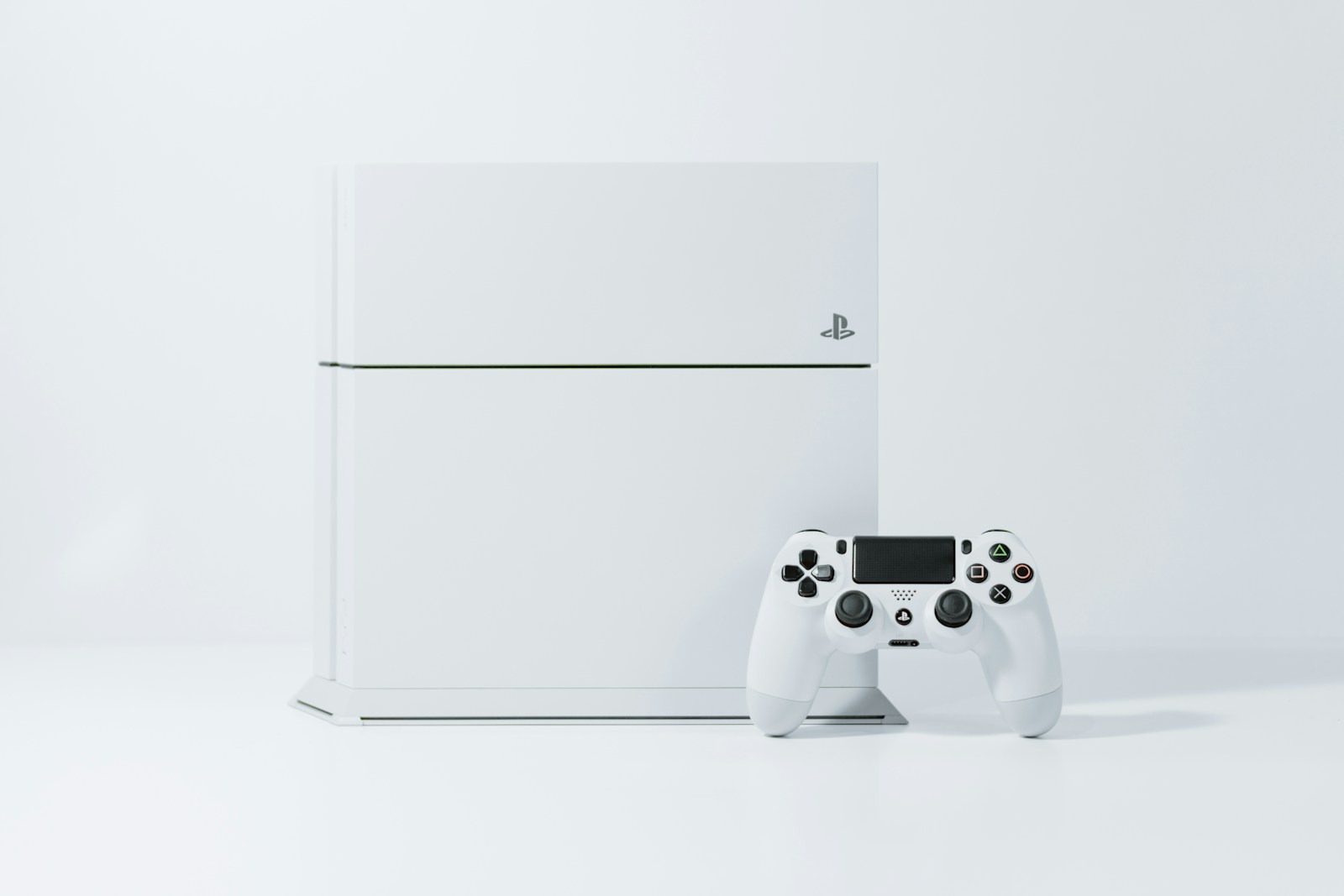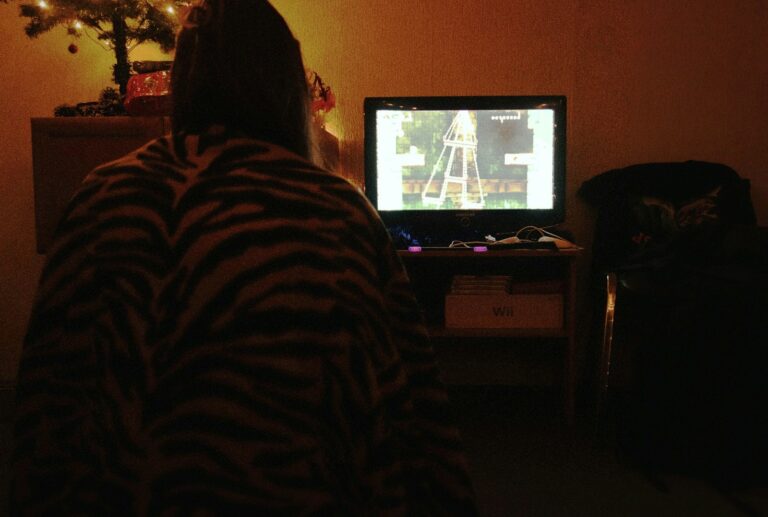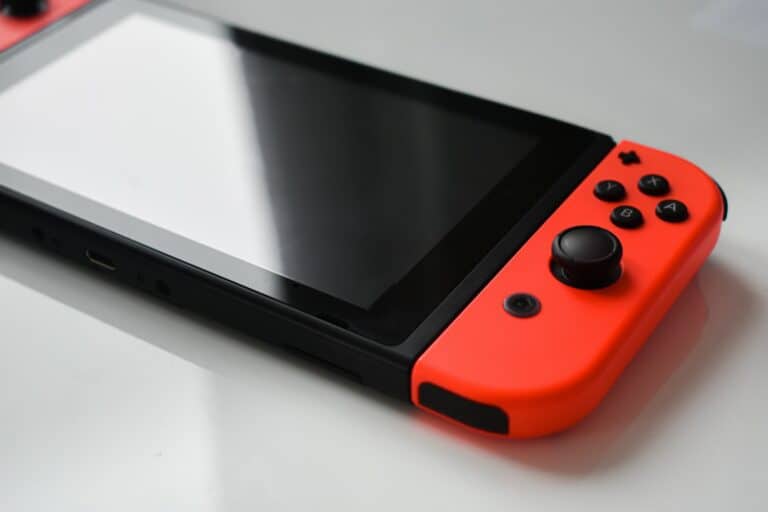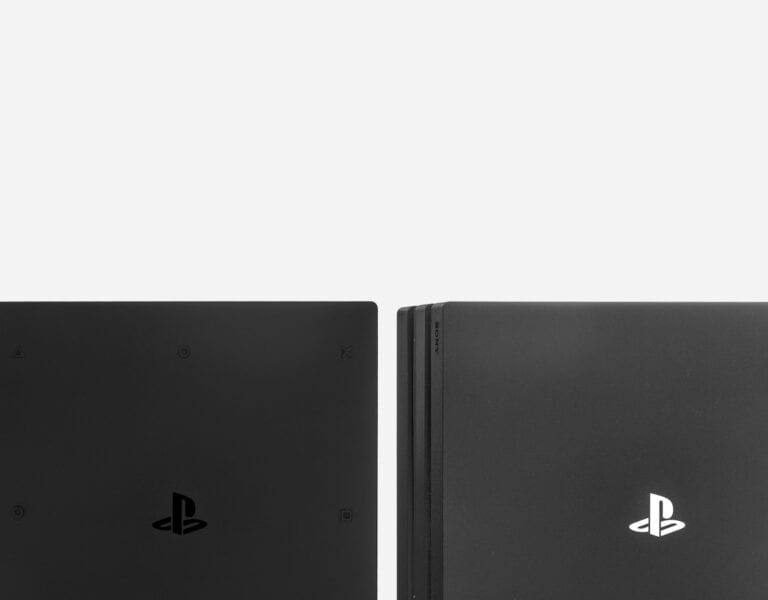
Is your PS4 refusing to power on? This frustrating issue can leave you worried about lost gaming progress and expensive repairs. Don’t panic – there are several effective troubleshooting steps you can try before seeking professional help. To fix a PS4 that won’t turn on, start by unplugging it completely for at least one minute, then reconnect and try holding the power button until you hear two beeps to enter safe mode.
Many PS4 power issues are caused by simple problems like loose cables, power surges, or dust buildup. Sometimes the console just needs to be power cycled or connected to a different outlet. If your PlayStation isn’t responding to the power button, try disconnecting all wires and reconnecting them before attempting to boot in safe mode. You might also want to try a different power cable as faulty cords can prevent power from reaching your console.
How To Fix a PS4 That Won’t Turn On
If your PlayStation 4 refuses to power on, it can be frustrating. Follow these steps to diagnose and fix the problem:
1. Check the Power Connection
- Ensure the power cable is firmly plugged into both the PS4 and the wall outlet.
- Try a different power outlet to rule out outlet issues.
- Use the original power cable, if possible.
- Inspect the power cable for damage.
2. Perform a Power Cycle
- Unplug the PS4 from power.
- Wait at least 30 seconds to 1 minute.
- Press and hold the power button on the PS4 for about 10 seconds to discharge residual power.
- Plug the power cable back in and try turning it on again.
3. Check the Power Supply and Internal Hardware
- If the PS4 still won’t turn on, the internal power supply might be faulty.
- For older PS4 models, the power supply can sometimes be replaced.
- If you’re comfortable, open the PS4 and check for dust buildup or loose connections.
- Cleaning dust from vents and internal components can help prevent overheating and power issues.
4. Try Safe Mode
- Press and hold the power button for about 7 seconds until you hear a second beep.
- This boots the PS4 into Safe Mode.
- From Safe Mode, try options like “Restart System” or “Rebuild Database.”
- If Safe Mode doesn’t appear, this may indicate a deeper hardware issue.
5. Check the HDMI and Display
- Sometimes the PS4 appears off because the display is not working.
- Ensure the HDMI cable is securely connected.
- Try a different HDMI cable or TV/monitor.
6. Reset the Power Supply Fuse (For Some Models)
- Some PS4 models have a fuse that can be reset or replaced.
- This step requires opening the console and should be done carefully or by a professional.
7. Contact Sony Support or a Professional Repair Service
- If none of the above steps work, the issue might be with the motherboard or other internal components.
- Contact Sony support or take the console to a certified repair center.
Additional Tips:
- Avoid using third-party power cables or adapters.
- Keep your PS4 in a well-ventilated area to prevent overheating.
- Regularly clean dust from vents and fans.
Sources:
- Lifewire: PS4 Won’t Turn On? Troubleshoot with These Easy Fixes
- iFixit: PlayStation 4 Won’t Turn On Troubleshooting
- Console Fixit: Top Reasons Why Your PS4 Won’t Turn On
Key Takeaways
- Unplug your PS4 completely for at least one minute before reconnecting and attempting to power on with a long press of the button.
- Try using different power cables and outlets to rule out electricity supply problems.
- Clean dust from your console regularly and avoid unplugging while the system is running to prevent power issues.
Understanding the Problem
When your PS4 won’t turn on, it’s important to identify the specific issue before attempting repairs. Several common problems can prevent your PlayStation from powering up properly.
PS4 Not Working
If your PS4 won’t turn on at all, you might be dealing with a power-related issue. This is one of the most common problems PS4 owners face. The console might not respond when you press the power button or it might briefly light up before shutting down again.
First, check if your PS4 is properly connected to a working power outlet. Try unplugging your PS4 from the wall outlet for at least one minute to reset any electrical issues.
Sometimes the problem lies with the power supply unit inside the console. Overheating can also prevent your PS4 from turning on. Make sure your console has proper ventilation and isn’t covered by dust.
The power button itself might be faulty. In some cases, you can try holding the power button for 30 seconds to a minute to drain excess power and perform a hard reset.
PS4 Cannot Access System Storage
When your PS4 turns on but displays a “Cannot access system storage” error, you’re experiencing a storage-related failure. This indicates the console can’t properly read from or write to its internal hard drive.
This issue might occur after a power outage, improper shutdown, or if the hard drive is physically damaged. Your PS4 might start up but then show a black screen or error message.
Try starting your PS4 in Safe Mode by holding the power button until you hear two beeps. From there, select “Rebuild Database” (Option 5). This can often fix storage access issues without data loss.
If rebuilding doesn’t work, you might need to reinitialize your PS4 (Option 7), which will erase all data. In severe cases, the hard drive might need replacement.
White Light of Death
The “White Light of Death” occurs when your PS4 powers on with a solid white light but fails to display anything on your TV. This is different from the normal blue light that indicates proper operation.
This issue often points to a problem with either the HDMI connection or internal hardware failure. First, check if your HDMI cable is working properly by testing it with another device.
Try a power cycle by unplugging your PS4 completely from both the wall and the back of the console for at least 20 minutes. This allows the system to fully reset.
If the white light persists, the issue might be with the APU (Accelerated Processing Unit) or its solder connections. Overheating is a common cause, so check that your PS4’s vents aren’t clogged with dust.
In many cases, the White Light of Death requires professional repair if basic troubleshooting doesn’t resolve it.
Basic Troubleshooting Steps
When your PS4 won’t turn on, there are several simple fixes you can try before seeking professional help. These steps address the most common causes of power issues and often resolve the problem without any technical knowledge.
Checking Power Connections
First, check that your PS4 is properly connected to a working power source. Make sure the power cable is firmly plugged into both the console and the wall outlet.
Try using a different wall outlet to rule out problems with your current power source. Sometimes outlets can fail or circuit breakers may have tripped.
Inspect the power cable for any visible damage like fraying, bends, or exposed wires. A damaged power cable can prevent proper electrical flow to your PS4.
If you have access to another PS4 power cable, try swapping it out. Power cables can wear out internally even when they look fine on the outside.
Performing a Power Cycle
Completely disconnect your PS4 from the power source by unplugging it from the wall. This helps drain any residual power in the system.
Wait at least 30 seconds to 1 minute before reconnecting. This drains excess power and performs a hard reset of the internal components.
Once reconnected, press and hold the power button on the PS4 console itself (not the controller) for at least 7-10 seconds. You might hear a second beep which indicates the console is performing a proper restart.
If the console still doesn’t respond, try repeating the power cycle process but leave the system unplugged for longer – around 20 minutes. This gives capacitors more time to fully discharge.
Testing with Another TV or Monitor
Your PS4 might actually be turning on but not displaying on your screen. Connect your console to a different TV or monitor using a known working HDMI cable.
Make sure you’re selecting the correct input source on your TV after connecting the PS4. Sometimes the issue is as simple as being on the wrong input channel.
Check your HDMI cable for damage and try a different one if available. Faulty HDMI connections can prevent your PS4 from displaying even when it’s powered on.
Ensure the HDMI ports on both your PS4 and TV are clean and free of dust or debris. Even small particles can interfere with the connection.
Advanced Diagnostic Approaches
When simple troubleshooting fails to revive your PS4, advanced diagnostic methods can help identify and resolve deeper issues. These techniques access the console’s core functions and can often fix problems that standard power cycling cannot.
Entering Safe Mode
Safe Mode provides access to several troubleshooting options when your PS4 won’t turn on normally. To enter Safe Mode:
- Power off your PS4 completely by holding the power button until it shuts down
- Press and hold the power button until you hear two beeps (about 7 seconds)
- Connect your controller with a USB cable and press the PS button
If your PS4 won’t enter Safe Mode, check your power cable connections or try a different HDMI cable to ensure it’s not a display issue.
Your controller must be connected via USB cable, not wirelessly. If the console still won’t enter Safe Mode, you might need to try different power outlets or check for hardware issues.
Rebuilding the PS4 Database
Rebuilding your database is like defragmenting your console. This option is available through Safe Mode and can fix many software-related startup issues.
To rebuild your database, select option 5 in Safe Mode. This process doesn’t delete your saved games or data but reorganizes how information is stored.
The rebuilding process may take several hours depending on how much data you have stored. Your PS4 will show a progress bar during this time.
This solution is particularly effective when your PS4 turns on but crashes, freezes, or performs sluggishly. It’s a good first step before trying more drastic measures.
Initializing PS4
Initializing your PS4 is a last-resort option that returns your console to factory settings. There are two initialization options in Safe Mode:
Option 6 – Initialize PS4: Deletes all user data and restores default settings but keeps the system software.
Option 7 – Initialize PS4 (Reinstall System Software): Completely wipes the console, including system software. You’ll need to download the latest system software to a USB drive.
Important: Back up your saved games to PlayStation Plus cloud storage or a USB drive before initializing if possible.
If initialization resolves your power issues, it suggests the problem was software-related rather than hardware. After initializing, you’ll need to reinstall all games and restore your saved data.
Hardware Inspection and Maintenance
Physical problems with your PS4 can often prevent it from turning on properly. Examining and maintaining key hardware components can solve problems that software fixes cannot address.
Checking the HDMI Port and Cable
Start by inspecting your PS4’s HDMI port for any visible damage or bent pins. Even slight damage can prevent proper connections. Gently clean the port using compressed air to remove dust buildup.
Next, examine your HDMI cable for any kinks, frays, or damage. These cables often wear out over time, especially if frequently moved or bent.
Try using a different HDMI cable to determine if your current one is faulty. Connect the PS4 to a different TV or monitor to rule out display issues.
Check that the HDMI cable is firmly seated in both the PS4 and TV ports. Loose connections can mimic a “won’t turn on” situation when actually the console is running but not displaying.
Overheating and Ventilation Issues
Your PS4 has built-in protection that prevents it from turning on when overheated. Place your hand near the console vents – if it feels unusually hot, overheating may be the issue.
Ensure your PS4 has adequate ventilation space. Keep at least 4 inches of clearance on all sides and avoid placing it in enclosed cabinets.
Clean the vents and fans using compressed air. Dust buildup is the most common cause of PS4 overheating problems. For thorough cleaning, you may need to partially disassemble the console.
Consider elevating your PS4 slightly to improve airflow underneath. Small stands or cooling pads designed for consoles can help maintain proper operating temperatures.
If your PS4 still overheats after cleaning, the internal cooling fan might be failing or the thermal paste between the processor and heat sink may need replacement.
Professional Repair and Support
Sometimes DIY fixes won’t solve your PS4 power issues. When your troubleshooting attempts fail, it’s time to consider professional help or official PlayStation support channels.
When to Seek Professional Help
If you’ve tried all the basic troubleshooting steps and your PS4 still won’t turn on, it’s time to seek professional assistance. Consider professional repair when:
- Your console shows signs of physical damage
- You hear unusual noises when attempting to power on
- The console powers on briefly but shuts down immediately
- Your warranty has expired, making official support costly
Local computer repair shops often service gaming consoles at lower rates than official repairs. Before choosing a repair shop, check their reviews and ask if they have specific experience with PS4 repairs.
Be aware that opening your PS4 yourself will void any remaining warranty. Professional technicians have specialized tools to safely access internal components without causing further damage.
Contacting PlayStation Support
PlayStation offers several official support options when your PS4 won’t turn on. Their online self-service tool helps troubleshoot hardware issues before contacting a representative.
To contact PlayStation Support directly:
- Visit the PlayStation support website
- Select your specific PS4 model
- Choose “Power Issues” from the problem categories
- Follow the guided troubleshooting steps
- Request repair service if needed
You can also call their support line or use live chat for immediate assistance. Have your console’s serial number ready before contacting support.
If your PS4 is under warranty, repairs may be covered at no cost. PlayStation typically offers a one-year manufacturer’s warranty. Extended warranties purchased separately may provide longer coverage periods.
Email correspondence with support may take 24-48 hours for a response, so consider phone or chat for urgent issues.
Data Management and Prevention
Proper data management can prevent losing game progress when your PS4 won’t turn on. Taking preventive steps before problems occur can save you hours of gameplay and frustration.
Backing Up PS4 Data
You should regularly back up your PS4 data to avoid losing important game saves and settings when power issues occur. Connect an external USB storage device with enough space for your data to your PS4.
Navigate to Settings > System > Back Up and Restore > Back Up PS4. Select the content you want to back up – saved data, applications, settings, or screenshots.
PS4 automatically creates periodic cloud saves if you have a PlayStation Plus subscription. To enable this feature:
- Go to Settings > Application Saved Data Management
- Select Auto-Upload
- Check the games you want to back up automatically
For critical game saves, manually upload them to the cloud after significant progress. This extra step provides protection if your console fails between automatic backups.
Using Data Recovery Tools
When your PS4 won’t turn on and you haven’t backed up your data, recovery tools might help. First, try booting your PS4 in Safe Mode by holding the power button for 7 seconds until you hear two beeps.
From Safe Mode, select “Rebuild Database” option (Option 5) to fix corrupted data without deleting your saved games. This process reorganizes your system’s files.
For severe cases where the hard drive is accessible but the console won’t start, remove the drive and connect it to a PC using a SATA-to-USB adapter. Software like MiniTool Partition Wizard can scan the drive to recover game saves and media files.
Remember that some corrupted data issues might not be fixable with software alone. Professional repair services might be necessary for hardware failures.
Accessory Malfunctions
Sometimes when your PS4 won’t turn on, the problem might actually stem from connected accessories interfering with normal startup operations. These peripheral issues can mimic complete power failures while being easier to fix.
Issues with DualShock 4 Controller
Your DualShock 4 controller can sometimes prevent your PS4 from powering on properly. If your controller has a hardware malfunction, it might send incorrect signals to the console during startup.
Try disconnecting all controllers from your PS4 before attempting to power it on. Press the power button directly on the console instead of using a controller to turn it on. This simple step often resolves startup issues.
Check your controller’s charging cable for damage. Frayed or broken cables can cause connection problems that affect the console’s ability to start normally.
Controller Reset Method:
- Locate the small reset button on the back of the controller (near the L2 button)
- Use a paperclip to press and hold for 5 seconds
- Reconnect the controller with a USB cable
- Try powering on your PS4 again
If multiple controllers are connected to your PS4, try removing all but one to eliminate potential conflicts that might be preventing proper startup.
Preventative Measures
Taking proactive steps to maintain your PS4 can help prevent power issues before they occur. Regular system maintenance and proper physical care of your console significantly reduce the risk of startup problems.
Regular System Updates
Keeping your PS4 software updated is crucial for preventing power-related issues. Sony regularly releases system updates that fix bugs and improve overall system stability.
To check for updates, go to Settings > System Software Update. Enable automatic downloads to ensure you never miss important updates. These updates often contain fixes for known issues that might affect power management.
If your PS4 frequently enters rest mode instead of powering off completely, this can sometimes lead to power problems. Configure your power settings by going to Settings > Power Save Settings. Set appropriate time limits for rest mode to give your console regular complete shutdowns.
Your PS4 keeps logs of system errors. Periodically check these logs by going to Settings > System > Error History to catch potential issues before they escalate.
Proper Console Care
Your PS4’s physical environment plays a major role in preventing power failures. Place your console in a well-ventilated area with at least 4 inches of clearance on all sides to prevent overheating.
Dust accumulation is a common cause of power issues. Clean your PS4 every 3-4 months by:
- Gently using compressed air on vents
- Wiping the exterior with a microfiber cloth
- Never using liquid cleaners directly on the console
Protect your power cable from damage by avoiding sharp bends and keeping it away from high-traffic areas. Inspect it regularly for fraying or damage and replace it if necessary.
Use a surge protector to shield your PS4 from power fluctuations. This is especially important during storms or in areas with unstable electricity. A quality surge protector costs $20-30 but can save your $300+ console.
Handle your PS4 with care when moving it, and always power it down properly rather than unplugging while running.
Frequently Asked Questions
Troubleshooting a PlayStation 4 that won’t power on requires systematic diagnosis and specific solutions for different symptoms. These common issues range from power supply problems to internal hardware failures that can often be resolved without professional help.
What steps can be followed to diagnose a PS4 console that is not powering up?
When your PS4 won’t turn on at all, start by interrupting power to the console. Unplug the power cord from both the wall outlet and the PS4 for about 20 minutes to discharge any residual electricity.
Check your power cable for damage and try a different known-working power cable if possible. Sometimes the issue is as simple as a faulty cord.
Test your wall outlet with another device to confirm it’s working properly. If needed, try plugging your PS4 into a different outlet to rule out power source problems.
How can one troubleshoot a PS4 console that beeps but won’t turn on?
If your PS4 beeps when you press the power button but doesn’t turn on, try holding the power button for 30 seconds to a minute. This drains excess power and performs a hard reset of the system.
Check for dust blocking ventilation ports. Overheating can trigger protective shutdown mechanisms that prevent normal startup despite the initial beep.
Try disconnecting all peripherals including controllers, external hard drives, and USB devices. Sometimes these can interfere with the boot process when malfunctioning.
What does a blue light indicate when a PS4 fails to turn on, and how can it be addressed?
The blinking blue light (often called the “Blue Light of Death”) typically indicates a video output problem or software corruption. To fix this, power cycle your PS4 by unplugging it completely for 5 minutes.
Try connecting your PS4 to a different TV or monitor using a different HDMI cable. This helps determine if the issue is with the console or display connection.
Boot your PS4 in Safe Mode by holding the power button until you hear two beeps. From the Safe Mode menu, try options like “Rebuild Database” or “Initialize PS4” (only as a last resort as this erases your data).
What are common reasons for a PS4 controller to not turn on, and what are the solutions?
A PS4 controller that won’t turn on often has a depleted battery. Connect it directly to the console with a USB cable and let it charge for at least 30 minutes.
Try resetting the controller by locating the small reset button on the back (near L2 shoulder button) and pressing it with a paperclip for 5 seconds.
Check for physical damage to the USB ports or charging cable. Using different cables and ports can help identify connection problems that prevent charging or pairing.
How can one identify and resolve issues with a PS4 displaying a white light but not turning on?
When your PS4 shows a solid white light but doesn’t complete startup, it often indicates the console is powered on but stuck in an initialization phase. Disconnect all cables and peripherals, then reconnect only the essential ones.
Hold the power button for 7 seconds until you hear two beeps to force shutdown, then restart after waiting 30 seconds.
Check if your hard drive is properly seated inside the console. A loose connection can cause the white light issue without completing the boot process.
What methods are available to initiate a PS4 in Safe Mode when standard start-up fails?
To enter Safe Mode, ensure your PS4 is completely off, then press and hold the power button for about 7 seconds until you hear two beeps. This brings up the Safe Mode menu.
You must connect your controller via USB cable to navigate the Safe Mode menu—wireless connection won’t work here.
Safe Mode offers several helpful options including “Restart PS4,” “Update System Software,” “Rebuild Database,” and “Restore Default Settings.” Try these options in order from least to most invasive to troubleshoot startup issues.






